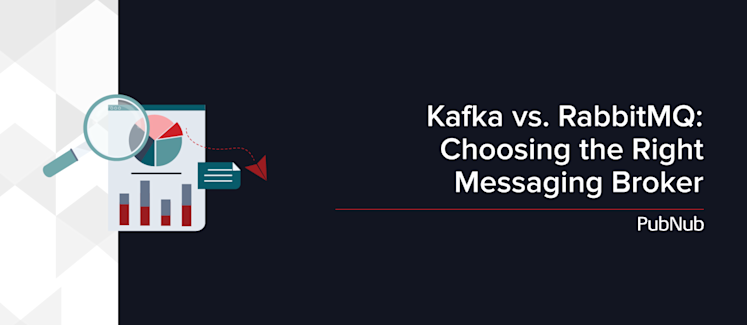
In the vibrant world of event-driven architectures, choosing the right messaging broker is crucial for efficient and scalable communication. Two of the most popular contenders are Kafka and RabbitMQ, each with its strengths and weaknesses. Although they serve a similar purpose, they have distinct architectures, performance characteristics, and use cases. In this blog post, we will delve into the architectural differences, performance comparisons, and explore some common use cases for Kafka and RabbitMQ to help you navigate the decision-making process.
Architecture
Kafka
Apache Kafka is an open-source distributed event streaming platform that is known for its high-throughput, fault-tolerance, and real-time data processing capabilities. Kafka follows a pub-sub model where producers write messages to topics, and consumers subscribe to those topics to receive the messages. Kafka stores messages in a distributed commit log, allowing high scalability and fault tolerance. This allows for high throughput and message replay capabilities, making it ideal for real-time data processing and event sourcing.
The architecture of Kafka consists of three main components: producers, brokers, and consumers. Producers publish messages to Kafka topics, and brokers are responsible for storing and replicating the data across the kafka cluster. Consumers read data from one or more topics, enabling parallel processing and scalability.
RabbitMQ
RabbitMQ is a flexible and open-source message broker that implements the Advanced Message Queuing Protocol (AMQP). It follows a traditional message queue model (The RabbitMQ queue), allowing applications to communicate asynchronously by sending and receiving messages and delivering messages in order to specific consumers. This ensures reliable message ordering and flexibility in message routing, making it suitable for task processing and microservice communication.
RabbitMQ's architecture centers around a central message broker, which acts as an intermediary between producers and consumers. For message replication and retention, producers send messages to exchanges, and those exchanges route the messages to queues based on predefined rules. Consumers then retrieve messages from the queues and process them.
Performance
When it comes to performance, Kafka and RabbitMQ have similar functionality but different strengths.
Kafka
Excels in high-throughput and real-time data streaming scenarios, boasting excellent scalability and low latency. It can handle millions of messages per second, making it suitable for use cases that require fast and continuous data processing. Its architecture allows for horizontal scaling by distributing the workload across multiple brokers, handling large volumes of data efficiently. It also provides strong durability guarantees by persisting messages to disk, ensuring fault-tolerance and data durability.
RabbitMQ
Offers reliable message delivery by providing features such as acknowledgments and message persistence. It can handle thousands of messages per second, making it suitable for use cases with moderate throughput requirements. Its centralized architecture may introduce some performance overhead, but it offers robustness and message integrity. While it scales vertically, horizontal scaling capabilities are limited compared to Kafka.
Use Cases
Kafka
Ideal for a wide variety of different use cases
Real-time analytics and streaming applications
Event sourcing, ingestion, and log aggregation, especially involving big data.
Data pipelines and microservice communication with high-volume message processing
Applications requiring high scalability and fault tolerance
RabbitMQ
Well-suited for
Task processing, service integration, workflow orchestration, and workflow management including metrics and notifications.
Asynchronous communication between microservices
Enterprise messaging systems with reliable message delivery, including message priority and specific complex routing needs.
RabbitMQ's flexibility in supporting messaging patterns such as point-to-point, publish-subscribe, and request-response makes it useful in various application scenarios.
Making the Choice
Ultimately, the optimal choice depends on your specific needs:
Prioritize high throughput and real-time data processing? Use Kafka.
Need reliable message delivery and flexible routing for moderate workloads? Use RabbitMQ.
Considering message replay and log aggregation? Kafka emerges as the strong candidate.
Looking for seamless scaling for microservice communication with high volume? Kafka supports these.
Remember: Neither is inherently "better." Analyzing your specific requirements and considering factors like redundancy, scalability, high performance, high availability, large-scale API, and security are all vital to making an informed decision.
Additional Considerations
Complexity: Kafka's distributed architecture and append-only log might require more operational expertise compared to RabbitMQ's simpler queue-based approach.
Community and Support: Both platforms enjoy sizeable communities and active development.
Integration: Evaluate available integrations with your existing infrastructure and tools.
Does PubNub Integrate with Kafka and RabbitMQ?
PubNub offers the Kafka Bridge, allowing you to connect your Kafka stream with PubNub so you can send Kafka events into PubNub as well as extract PubNub events into your Kafka instance.
PubNub also supports AMQP, the technology that underpins RabbitMQ, as well as other messaging protocols such as MQTT, another message broker architecture popular in IoT.
PubNub also supports multiple server and client libraries and programming languages, including Node / Node.js, Python and Java.
Conclusion
With a clear understanding of the architectural differences, performance benchmarks, and ideal use cases, you can confidently choose between Kafka and RabbitMQ. So, take a deep dive into your project's specific needs and embark on the journey towards a robust and efficient event-driven architecture!